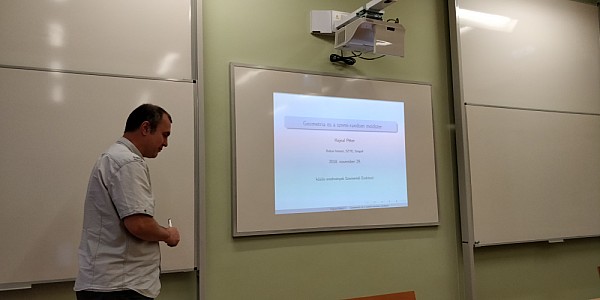Lecture of Péter Hajnal
- Details
- Published on 2018. november 08. csütörtök, 15:30
Geometric hypergraphs, two geometrical applications of the semi-random method
The Department of Geometry is pleased to divulge that
 Péter Hajnal
Péter Hajnal
(Szeged, Hungary)
gives a lecture at the Kerékjártó Seminar with title
a szemi-random módszer két geometriai alkalmazása
(Geometric hypergraphs, two geometrical applications of the semi-random method)
Date and place of the lecture is:
room Riesz (BO-107)
Abstract of the lecture:
Very often one can define a hypergraph based on a
geometrical set-up, and by combinatorial methods
can prove theorems with important geometrical
consequences.
The talk exhibits two examples. The first one is a Ramsey
type problem of Erdos and Gowers: How large does $N$
have to be such that among any $N$ points in the plane
you can find either $n$ points that are collinear or
$n$ points such that no three are collinear? We improve
previous results of Payne and Wood. The second one
is the Heilbronn problem for quadrangels.
Joint work with Endre Szemerédi
Here are some snapshots of the event:
Tájékoztatás:
az eseményeken rendszerint kép- és hangfelvétel is készül tömegfelvételek formájában, egyben az esemény sajtónyilvános rendezvény is.
A Polgári Törvénykönyvről szóló 2013. évi V. törvény 2:48. § (2) bekezdése alapján a tömegfelvételek,
valamint a nyilvános közéleti szereplés esetén nincs szükség a résztvevők hozzájárulására sem a felvétel elkészítéséhez,
sem annak felhasználásához, de az érintetteket erről előzetesen tájékoztatni kell.
Kötelezettségünknek jelen szöveg megjelenítésével teszünk eleget azzal megtoldva, hogy jelezzük:
a felvételeket az esemény népszerűsítésére, marketing céllal, online és nyomtatott csatornáinkon keresztül használjuk fel.

